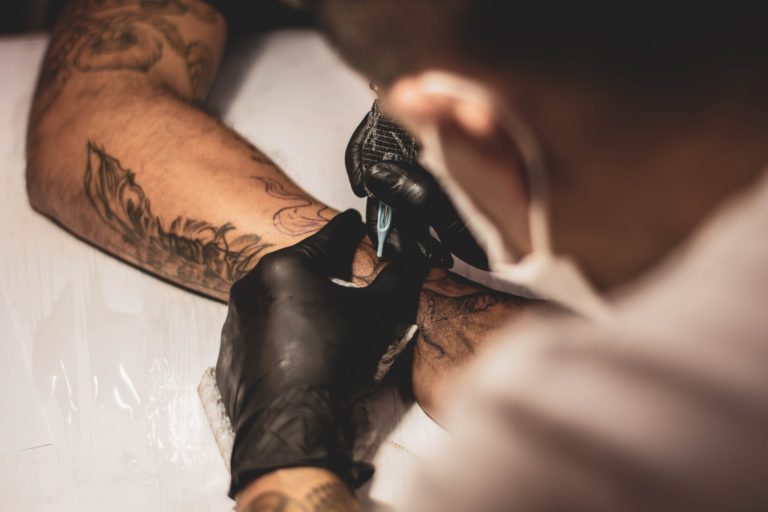Are you sick of that tattoo? The ill-placed one that you got while on vacation in college? Maybe the one that has the name of your ex? It may be time to explore the options of tattoo removal. However, you might be worried about breaking the bank to cover tattoo removal costs. You may be wondering if health insurance can help you cover those expenses? Let’s take a look at the options at your disposal.
Laser Tattoo Removal

If you’re looking into a tattoo removal cost, you’ve probably come across information about laser removal. Laser tattoo removal is the most commonly used solution to help fade away an old tattoo. The number of treatments you have to undergo for the tattoo removal process comes with a few factors. For example, the tattoo’s size can determine the number of sessions you need to reserve for the ultimate fade out of the ink. A tattoo the size of a postage stamp can take as few as three sessions at a lesser total cost, while larger tattoos can take as many as ten rounds of treatment with different wavelengths of laser technology.
Among the other important factors are the colors used in the tattoo, as the pigment and shades of the tattoo can actually take a longer time to fade out. While this is not complete tattoo removal, the old tattoo fades dramatically. Laser tattoo removal is considered a cosmetic procedure and is not covered by most insurance. Look into a free consultation to get an understanding of the tattoo removal price. However, insurance providers may cover aftercare treatment, such as an antibiotic ointment that needs to be applied to the region for at least a week after each laser treatment session.
Dermabrasion

Among the other removal methods available for tattoo owners is dermabrasion tattoo removal. Dermabrasion involves the use of a medical grinding tool to remove the outer layers of skin, sanding down the layers of skin containing ink particles. This is performed with local anesthetic and, like laser tattoo removal, a session of dermabrasion will result in an open wound that needs care after the procedure to avoid the risk of infection. This requires similar aftercare to that of laser tattoo removal to avoid any chance of infection.
This wound takes longer to heal after each session, usually anywhere from 10 to 14 days. More than one session of dermabrasion is needed based on the color of your tattoo and the tattoo’s size. It’s actually recommended to not use this method on larger tattoos because of the significant scarring from the procedure. Like laser removal, dermabrasion is considered a cosmetic procedure, and most insurance companies will not take on the costs.
Surgical Removal

The most invasive of all tattoo removal methods is surgical intervention. Also known as excision tattoo removal, this method involves cutting off tattooed skin and stitching the remaining skin near the site back together. While this is highly invasive, it’s the only true ultimate removal process. In some cases, it can be the less expensive option compared to laser tattoo removal and dermabrasion. Surgical removal will leave a scar, and it’s usually recommended to do this with small tattoos.
Surgical removal is considered a cosmetic procedure, and insurance will likely not cover those costs. However, if you’re experiencing tattoo regret, excision tattoo removal is among the more affordable options. The session can run on average between $150 and $350, depending on the size category that the tattoo fits in. It’s important to look into the tattoo removal options at your disposal and find payment plans that are best suited to your needs.







